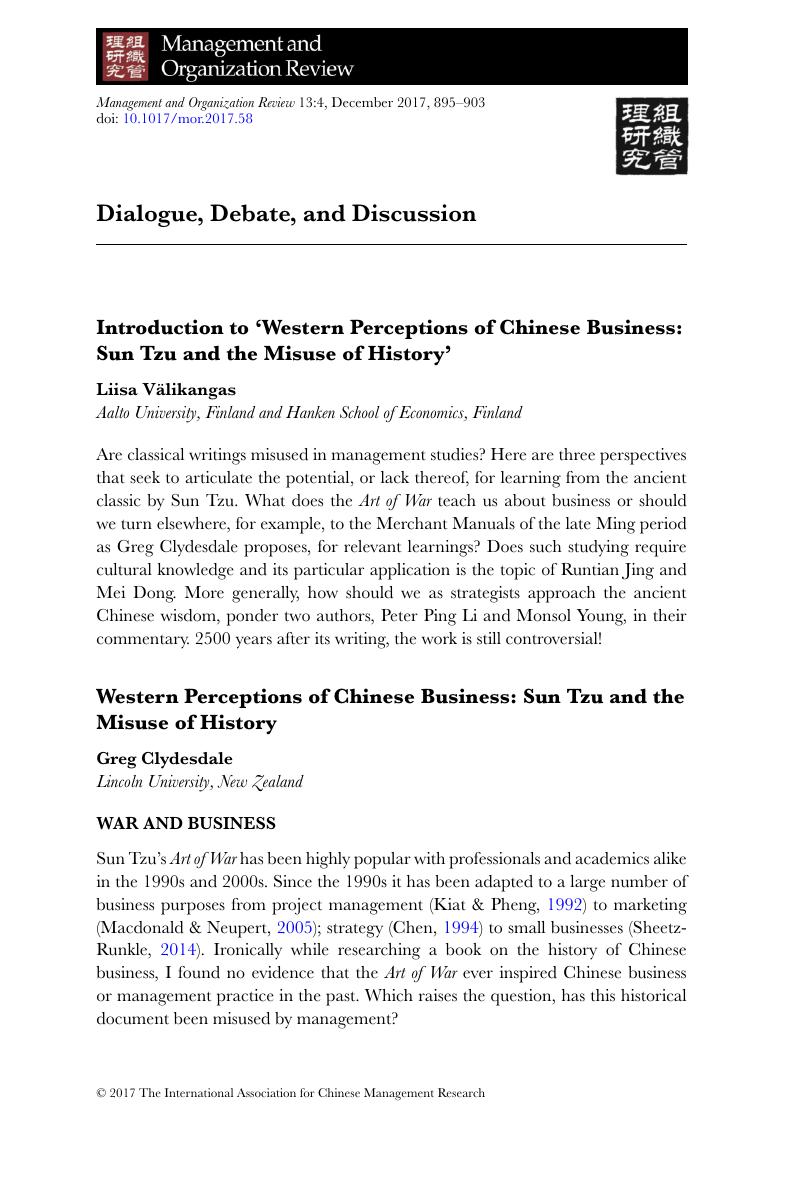Crossref Citations
This article has been cited by the following publications. This list is generated based on data provided by Crossref.
Jing, Runtian
and
Dong, Mei
2017.
Management Scholars’ Learning from History: Direct vs. Indirect Approach.
Management and Organization Review,
Vol. 13,
Issue. 4,
p.
905.
Li, Peter Ping
and
Yang, Monsol
2017.
How to Approach the Ancient Chinese Wisdom? A Commentary Concerning Sun Tzu'sThe Art of War.
Management and Organization Review,
Vol. 13,
Issue. 4,
p.
913.
Zhang, Chunyu
Liu, Liping
and
Xiao, Qijie
2022.
The Influence of Taoism on Employee Low-Carbon Behavior in China: The Mediating Role of Perceived Value and Guanxi.
Psychology Research and Behavior Management,
Vol. Volume 15,
Issue. ,
p.
2169.





